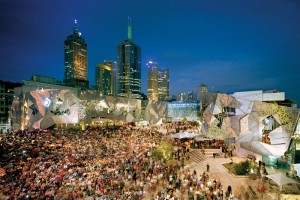For more up to date population and population forecasts for NSW, read our blog on the Top 20 fastest growing suburbs in NSW.
Talking about the characteristics of the population is what we do best at .id. However, the most basic demographic question of all is just “What is our population?”. With the recent release of Regional Population Growth (3218.0) by the ABS I just did a quick ranking to see what the biggest cities in Australia are.

Pretty straightforward, but always interesting. Everyone wants to know where their area ranks.
While Sydney and Melbourne are by far the two biggest cities, some of the smaller state capitals are eclipsed in population by some of the larger regional centres. Here is the official list of the top 33 centres for 2010-11. Why 33? The list includes all centres down to 50,000 population.
Australia’s largest cities, June 2011
| 1 |
Sydney (NSW) |
4,627,345 |
| 2 |
Melbourne (VIC) |
4,137,432 |
| 3 |
Brisbane (QLD) |
2,074,222 |
| 4 |
Perth (WA) |
1,738,807 |
| 5 |
Adelaide (SA) |
1,212,982 |
| 6 |
Gold Coast – Tweed (QLD/NSW) |
600,475 |
| 7 |
Newcastle (NSW) |
552,776 |
| 8 |
Canberra – Queanbeyan (ACT/NSW) |
417,860 |
| 9 |
Wollongong (NSW) |
293,503 |
| 10 |
Sunshine Coast (QLD) |
254,650 |
| 11 |
Hobart (TAS) |
216,656 |
| 12 |
Geelong (VIC) |
180,805 |
| 13 |
Townsville (QLD) |
176,327 |
| 14 |
Cairns (QLD) |
153,075 |
| 15 |
Toowoomba (QLD) |
132,936 |
| 16 |
Darwin (NT) |
128,073 |
| 17 |
Albury – Wodonga (NSW/VIC) |
107,086 |
| 18 |
Launceston (TAS) |
106,655 |
| 19 |
Ballarat (VIC) |
97,810 |
| 20 |
Bendigo (VIC) |
92,934 |
| 21 |
Mandurah (WA) |
89,559 |
| 22 |
Mackay (QLD) |
87,324 |
| 23 |
Burnie – Devonport (TAS) |
82,913 |
| 24 |
Latrobe Valley (VIC) |
81,572 |
| 25 |
Rockhampton (QLD) |
78,643 |
| 26 |
Bunbury (WA) |
70,037 |
| 27 |
Bundaberg (QLD) |
69,500 |
| 28 |
Hervey Bay (QLD) |
61,691 |
| 29 |
Wagga Wagga (NSW) |
59,005 |
| 30 |
Coffs Habour (NSW) |
53,798 |
| 31 |
Gladstone (QLD) |
52,949 |
| 32 |
Mildura (VIC) |
50,909 |
| 33 |
Shepparton (VIC) |
50,373 |
Source: Australian Bureau of Statistics: Regional Population Growth, Australia, 2010 – 11 (Cat. No. 3218.0)
Note that the boundaries used for this list include the main and outlying urban areas of the town or city, not necessarily based on local government boundaries. For example, the LGAs of Wagga Wagga and Bendigo have larger populations than the centres as listed here, while Albury-Wodonga’s definition extends beyond the LGA to encompass a wider district.
Some interesting points:
- The two largest cities account for 39% of all the nation’s population. The five largest make up 61%.
- Of the list of centres over 50,000, 11 are (all or part) in Queensland, while only 8 are (all or part) in NSW (to be fair, the next 4, just under 50,000 are all in NSW!).
- Though a state capital, Hobart sits well behind the non-capital cities of Gold Coast, Sunshine Coast, Newcastle and Wollongong, as our 11th largest city.
- The Gold Coast, just a few scattered coastal villages prior to 1960, is now Australia’s 6th largest city.
- As recently as 1980, Perth was a smaller city than Adelaide, but it now has a population more than 500,000 higher (43% higher).
- Western Australia only has 3 centres over the 50,000 mark, and one of those, Mandurah, is about to be subsumed into Greater Perth under the new geographic classification.
- South Australia and the Northern Territory each have just one entry in the list, Adelaide and Darwin (SA’s second largest centre, Mount Gambier, only has 26,000 people).
- Always in competition, Ballarat and Bendigo are next to each other on the list, with Ballarat still having a slightly higher population (the Local Government Area of Greater Bendigo has a higher population but the outer parts are excluded from the official urban area).
- There is also a strong rivalry between Launceston and Hobart, but Hobart has a much larger population.
- Three of these centres cross state borders.
So where does your area sit? Current Estimated Resident Populations have now been updated on profile.id and economy.id sites, so you can check out the most up-to-date population for your LGA right now at .id’s demographic resource centre.












